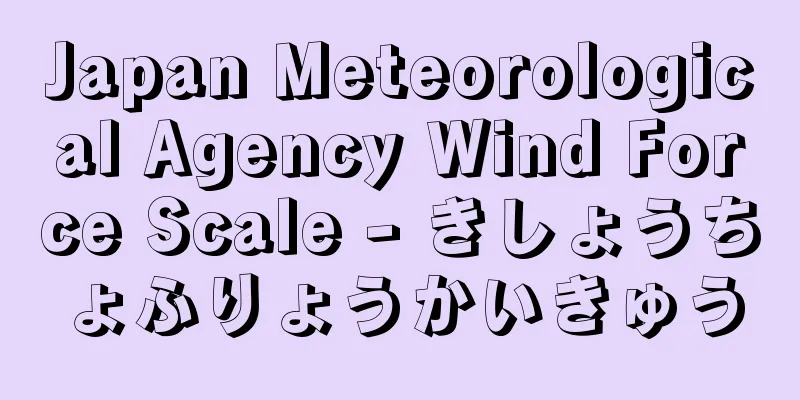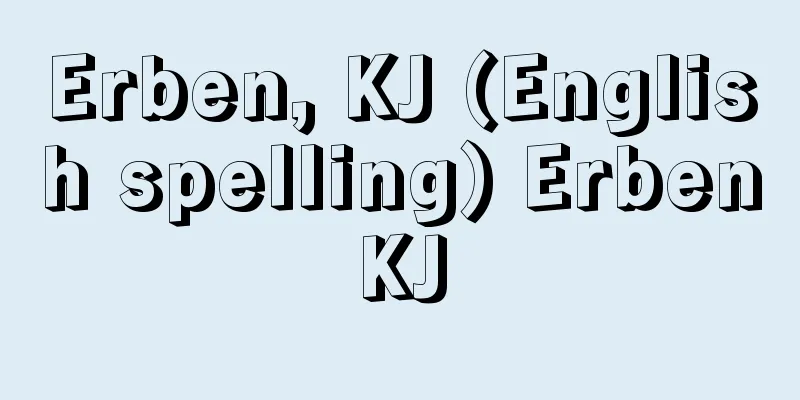Pegmatite - Pegmatite (English spelling)

|
A coarse-grained, holocrystalline granite-like rock that occurs in dykes, lenses, or veins within granite bodies or the rocks surrounding them. It is also called megagranite. The crystals are usually a few centimeters to a few tens of centimeters in size. Sometimes they can be several meters or even 10 meters or more. Pegmatites are often composed mainly of quartz and alkali feldspar, and are characterized by the presence of quartz scattered among the alkali feldspar in the form of wedge letters (called grammatical intergrowths). In pegmatites, parts of different mineral compositions tend to be arranged in bands. They are diverse, ranging from simple mineral combinations mainly consisting of alkali feldspar and quartz to those consisting of more than 100 types of minerals including rare elements. Rock-forming minerals include quartz, alkali feldspar (microcline, perthite), plagioclase, muscovite, biotite, apatite, garnet, tourmaline, and allanite. Minerals that contain mainly rare elements include beryl, chrysoberyl, and phenocryst (beryllium), tourmaline and axite (boron), apatite, mica, topaz, and tourmaline (fluorine), lepidolite, spodumene (lithium), cassiterite (tin), wolframite (tungsten), and zircon (zirconium). Minerals containing rare earth elements and rare elements such as molybdenum, niobium, tantalum, and uranium are also found in pegmatite. Pegmatite is mined to extract feldspar, which is a raw material for ceramics. In Japan, it is mined in the Ishikawa region of Fukushima Prefecture and other areas. When coarse or large grains with similar mineral composition are found in rock bodies of syenite, nepheline syenite, gabbro, or dolerite, these are called syenite pegmatite, nepheline syenite pegmatite, gabbro pegmatite, or dolerite pegmatite (or dolerite pegmatite). Most pegmatites are formed when the magma that created the intrusive rock body crystallizes, resulting in a residual liquid with concentrated volatile components, which acts to accelerate the growth of the crystals, forming a large crystal aggregate. [Tokiko Chiba] [Reference] |Source: Shogakukan Encyclopedia Nipponica About Encyclopedia Nipponica Information | Legend |
|
花崗(かこう)岩体の中や花崗岩体の周囲の岩石の中に岩脈状、レンズ状あるいは脈状をなして産する粗粒・完晶質の花崗岩様の岩石。巨晶花崗岩ともいう。結晶の大きさは数センチメートルから数十センチメートルが普通。ときには数メートル、10メートル以上のこともある。ペグマタイトは石英とアルカリ長石を主体とすることが多く、アルカリ長石の中に石英が楔形(くさびがた)文字のような形で点在する(文象連晶という)のが特徴である。ペグマタイトでは鉱物組成の違う部分が帯状に配列する傾向がある。アルカリ長石と石英を主とした単純な鉱物組合せのものから、希元素を含む100種以上の鉱物からなるものまで多様である。造岩鉱物は石英、アルカリ長石(微斜長石、パーサイト)、斜長石、白雲母(しろうんも)、黒雲母、燐灰(りんかい)石、ざくろ石、電気石、褐簾(かつれん)石など。希元素を主成分とする鉱物として、緑柱石・クリソベリル・フェナク石(ベリリウム)、電気石・斧石(おのいし)(ホウ素)、燐灰石・雲母・トパーズ・電気石(フッ素)、鱗雲母・リチア輝石(リチウム)、錫石(すずいし)(スズ)、鉄マンガン重石(タングステン)、ジルコン(ジルコニウム)などを伴う。そのほか希土類元素やモリブデン、ニオビウム、タンタル、ウランなどの希元素を含む鉱物もペグマタイト中に産する。ペグマタイトは陶磁器の原料である長石を取り出すために採掘される。日本では福島県石川地方などで採掘されている。 閃長(せんちょう)岩、霞石(かすみいし)閃長岩、斑糲(はんれい)岩、粗粒玄武岩の岩体の中に、それらとよく似た鉱物組成の粗粒または巨粒の部分があるとき、それらの部分を閃長岩ペグマタイト、霞石閃長岩ペグマタイト、斑糲岩ペグマタイト、粗粒玄武岩ペグマタイト(またはドレライト質ペグマタイト)という。ペグマタイトの多くは、貫入岩体をつくったマグマが結晶するとき、最後に揮発性成分の濃集した残液が生じて、揮発性成分が結晶の成長を速める働きをするため、大きな結晶の集合体となったものである。 [千葉とき子] [参照項目] |出典 小学館 日本大百科全書(ニッポニカ)日本大百科全書(ニッポニカ)について 情報 | 凡例 |
>>: Vector space - bekutorukuukan (English spelling) vector space
Recommend
Gouldner, A.
… However, in today's advanced industrial soc...
Greco
His real name was Domenikos Theotokopoulos. He was...
cheliped
…The terminal segment is a movable finger that in...
False Frankincense - Ginyuukou
… Frankincense and myrrh were thus the main perfu...
Chemical - Caustic
The number of generations that insects undergo in...
Weiss, SL (English spelling) WeissSL
...The lute's revival in Germany coincided wi...
Zirfaea subconstricta (English spelling) Zirfaeasubconstricta
…Northern individuals tend to be smaller. Zirfaea...
Cervical spondylosis - Cave spondylosis
⇒ Cervical spondylosis Source: About Shogakukan Di...
Provocation (English spelling)
During the ancient Roman Republic, citizens had th...
Endzelins, J.
...The national writer Rainis and the folk music ...
Para Red - Para Red (English spelling)
A method developed in 1880 for dyeing cotton. Cot...
Stains
A colloquial name for liver spots. They are flat,...
Anba
… Representative works include “Eheya Noala”, “Bo...
Mary Poppins
A maid created by British children's author Pa...
Peddler - Gyosho
A business method in which goods are carried arou...









